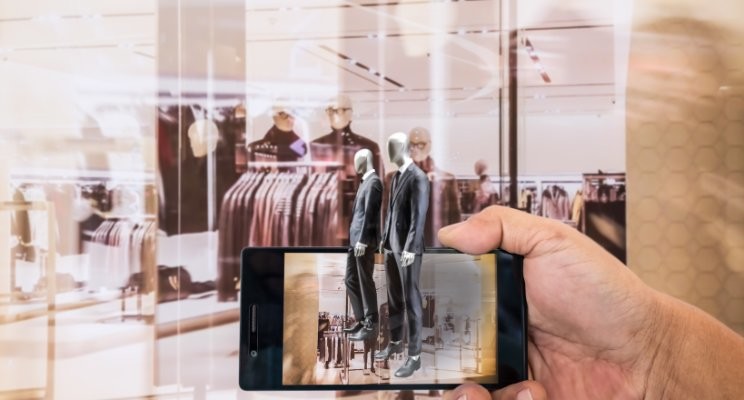2019: A Transformational Journey

In 2017, retail analysts bemoaned the imminent retail apocalypse. But, by mid-2018 many saw an unexpected upturn in their businesses resulting from a surging economy, smaller stores, better digital marketing, improved omni-channel capabilities and increased traffic. Retailers seem to be finally understand that fickle digitally savvy consumers have increasingly high expectations and the old playbook won’t ensure future success amidst rapid change. A recent PSFK Study cites that 54% of consumers expect retailers to be able to institute change within 6 months. While digitally native brands are imbued with an agile mindset and a customer-first, digital-first philosophy, most established traditional merchants are not, and can’t move that quickly.
E-commerce will continue to grow faster than bricks & mortar and is estimated at 21.5% growth for 2019. However there are inherent limitations to pure-play formats which is spawning a new generation of digitally interactive store concepts. Highly-engaged D2C brands are rapidly expanding with innovative physical spaces and immersive customer-centric digital experiences that are redefining the face of retail. However, most traditional retailers are approaching digital innovation as a “test and learn” add-on to their existing formats, outdated operating models and siloed reporting structures. Not surprisingly, many of these “tinkering” projects are not seeing the anticipated ROI.
Digital Transformation starts with a clear vision what “good” looks like and codifying how customers want to engage across channels — ultimately digitizing those engagement touch points to create lasting customer value. Here are five ways that retailers are transforming in the year ahead.
If retail is being reinvented, then the winners of tomorrow must reconsider how products are bought, sold, delivered and serviced and what new operating models, business processes, management practices and technologies are required to nurture extraordinary customer relationships and optimize every part of their business.
Phygital Discovery and Curated Bricks & Mortar Experiences
Stores aren’t going away and consumers will continue to enjoy discovering new products in exciting environments. Hot digitally native brands like Casper and Allbirds are expanding physical locations as chain retailers “right-size” with fewer and smaller stores. An emerging real estate and co-working concept coined “Storefront as a Service” is popping up in major cities. Showfields in NY, Re: Store in SFO and WeWork’s WeMarket are three examples of innovative next gen spaces designed to showcase digital native brands by leveraging interactive displays, knowledgeable mobile-enabled staff and a well-executed customer engagement strategy. These spaces allow the brand to control the narrative and gain real-time market feedback. Similarly, creative niche brands are being discovered in carefully curated, constantly renewing spaces like STORY in NY which was recently acquired by Macy’s. The department store also invested in B8ta, another “storefront service” that showcases unique tech products in 80 locations. Big retailers are trying to decode the formula on how customer-centric thinking wrapped with technology is making these young innovators successful, as evidenced by Walmart’s acquisition of Bonobos.
AI & Machine Learning Get Personal
AI and machine learning are expected to be one of the greatest transformational forces in retail for 2019 and beyond. A recent study indicated 55% of retailers plan to leverage AI over the next 3 years. Historically, AI has been most prevalent in consumer insights, inventory management and price optimization. However, AI is now becoming the engine that enables personalized 1:1 interaction and expert product recommendation. For example, one startup leverages AI to visually recognize fabric patterns and marry that with key body and garment measurements to display individual wardrobe recommendations based a customer’s career/lifestyle, desired fit and budget. IBM’s Watson platform has applications as diverse as curating home décor to selecting jackets at North Face.
ChatBots and Conversational Commerce
Retailers are always exploring innovative ways to engage consumers. Those wanting a personal touch are deploying ecommerce ChatBots powered by AI learning algorithms that enable human-like interactive dialogues and real-time predictive recommendations. Voice controlled shopping assistants on Alexa and Google Home are also gaining momentum. Currently, these “skills” are usually limited to simple replenishment tasks and promotional messaging. However, as voice search evolves, we’ll see mobile location-aware search enhancing in-store shopping journeys.
Personalized Experiences and Associate Empowerment
Deploying mobile devices for associates continues to gain momentum, however most retailers haven’t fully monetized benefit from their investment. Mobile POS, Order Management and Training remain the most common mobile use cases, but Clienteling has been proven to make the biggest long-term business impact to frequency, ATV, and customer loyalty. While more vendors are selling solutions, customer success is often illusive. In the year ahead we’ll see more retailers stop “tinkering” and leverage industry experts to start upgrading their Clienteling and Assisted Selling practices and training as part of a broader retail transformation initiative.
Transparent, Efficient and Ethical Supply Chains
To reduce costs and enhance product availability, retailers, suppliers and logistics partners will continue to collaborate to improve visibility and efficiency in their retail supply chains. In the year ahead expect to see more pervasive use of IoT sensor networks and greater investment into blockchain technologies that improve how retailers track shipments, authenticate luxury goods, and ensure safety of food products. New supply chain solutions will also meet growing consumer demand to know that goods are sourced ethically.
If retail is being reinvented, then the winners of tomorrow must reconsider how products are bought, sold, delivered and serviced and what new operating models, business processes, management practices and technologies are required to nurture extraordinary customer relationships and optimize every part of their business.

